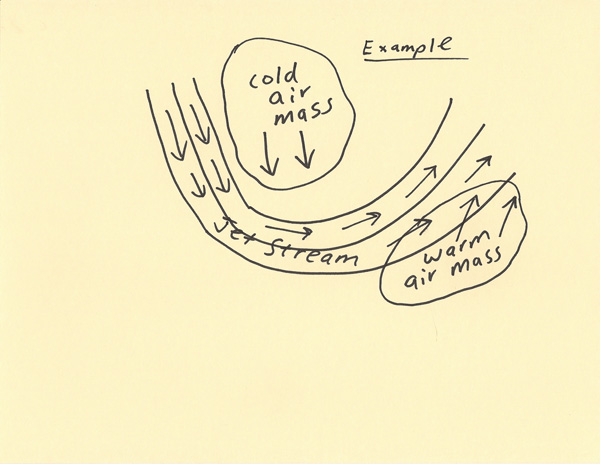
An air mass is a large region of air with similar temperature and moisture characteristics. Air masses build over source regions that have relatively similar ground surface characteristics. Air masses that build over the land are called continental air masses while air masses that build over the open ocean are called maritime air masses. Air masses cover 100ís to 1000ís of kilometers of distance. What causes these huge regions of air to move? Air masses build when the air stagnates over a region for several days/weeks. To move these huge regions of air, the weather pattern needs to change to allow the air mass to move. One major influence of air mass movement is the upper level winds such as the upper level winds associated with the jet stream. The jet stream wind is often referred to as a steering wind. The troughs and ridges of the jet stream will help transport cold air toward lower latitudes and warm air toward high latitudes. The diagram below shows the jet stream winds helping to drive cold air toward lower latitudes and warm air toward higher latitudes. Air masses modify once they move out of their source region. For example, a cold air mass will modify (warm up in this case) as it moves over warmer land in lower latitudes. The more intense sunlight in the lower latitudes also helps modify the cold air. The upper level winds are a reflection of the air masses surrounding these winds. As a cold air mass builds, the temperature gradient between the cold air mass and the warmer air outside the air mass will increase. This in turn, increases the upper level winds which in turn helps steer an air mass away from its source region.  |